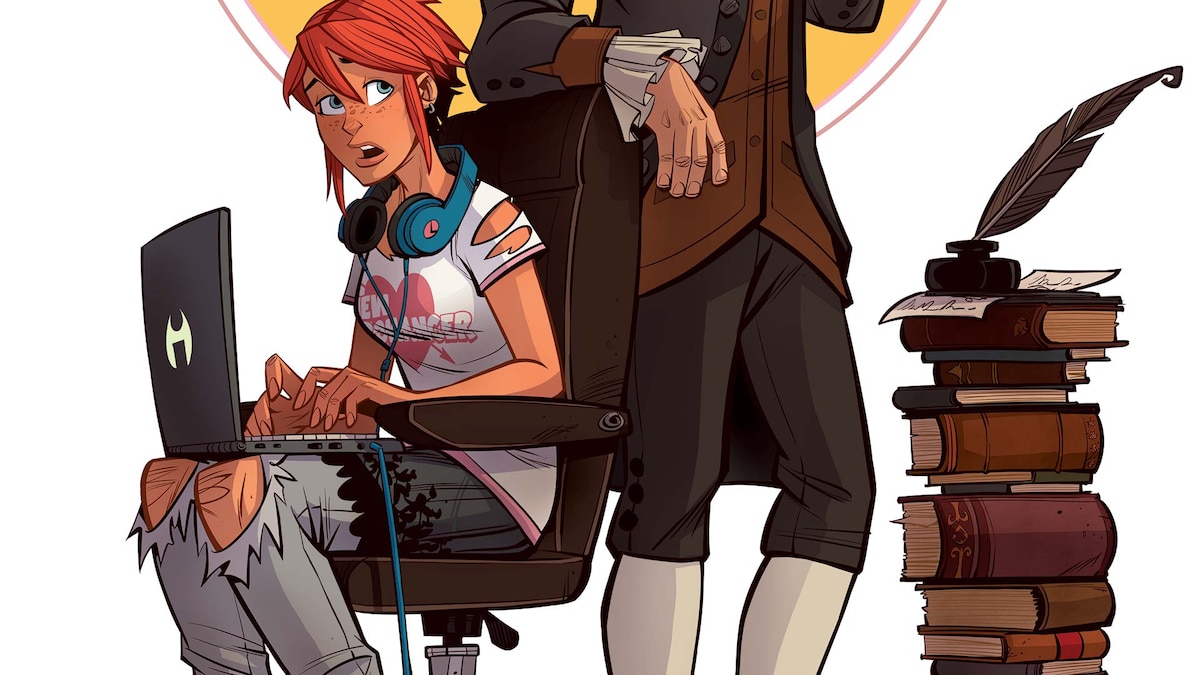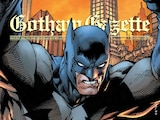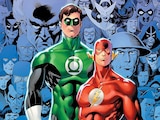NEW ROMANCER is a clever mashup of rom-com, cyberthriller and supernatural sci-fi that features a reanimated Lord Byron running rampant across Silicon Valley pursued by a young Byron-obsessed developer who’s inadvertently behind his resurrection. It comes courtesy of Vertigo stalwart Peter Milligan and stylish new artist Brett Parson and with Issue #2 now in stores, we thought it would be a great time to ask the two creators for a little commentary on last month’s debut. Here’s what they had to say about NEW ROMANCER #1.
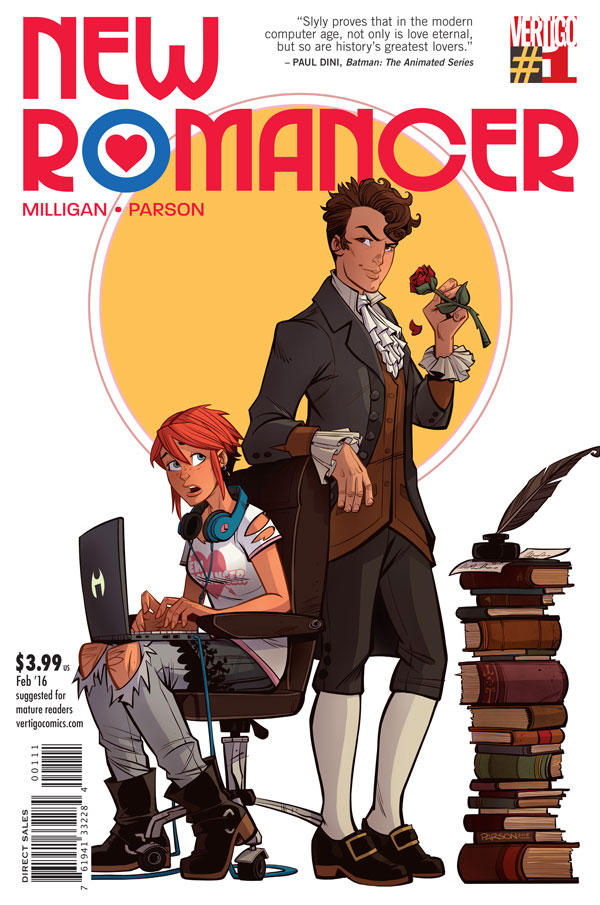
PETER MILLIGAN: NEW ROMANCER is a work of fiction, but most of the biographical detail relating to Lord Byron is correct.
PAGE 1:
MILLIGAN: For instance, Byron did indeed die in Messolonghi (otherwise known as Missolonghi). Part peripatetic exile, part freedom-fighter, Byron had become involved in Greece's struggle for independence from Turkey. To this day, his name is held in affection in Greece. His health had been failing for some time, and one of his doctors at the end was Dr. Millingen. He did indeed freely use leeches to bleed Byron, and this bleeding probably weakened the lord and hastened his death. When I included this (obscure) character in the opening scene, editor Shelly Bond thought it was a sly ironic nod toward my own name, but the Millingens have no connection with us. I like to think if a Milligan had been treating him, Byron would have been bled less and would probably have gotten drunk a little more. We might even have wrung another poem out of him.
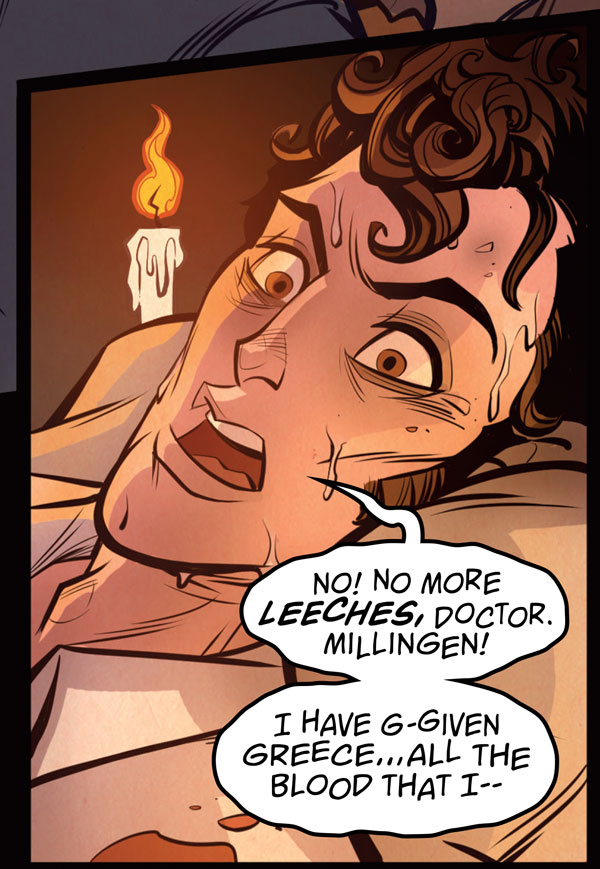
MILLIGAN: I wanted to start with this historical scene, before the influence of the story and Lexy Ryan's "love algorithm" cast their spells on events.
PAGES 2-3:
MILLIGAN: Lexy's job at Incubator—which will become one of the antagonists in this comic book—was inspired by a story a web-designer friend told me about a young kid who got a plum job in Silicon Valley. He was given a room, a desk, and a piece of paper and told to "play around.” Just as with Lexy, things did not work out well...though I don’t know what happened to this kid, I like to think he's writing weird reality-changing algorithms in some attic.
PAGE 4:
MILLIGAN: Here is the headquarters of New Romancer, the crappy internet dating company that Lexy really works for. One thing I really love about these New Romancer scenes is how decrepit Brett has made the New Romancer house, and how it gets increasingly more decrepit as the story progresses: a metaphor for the perilous state of the business being run inside.
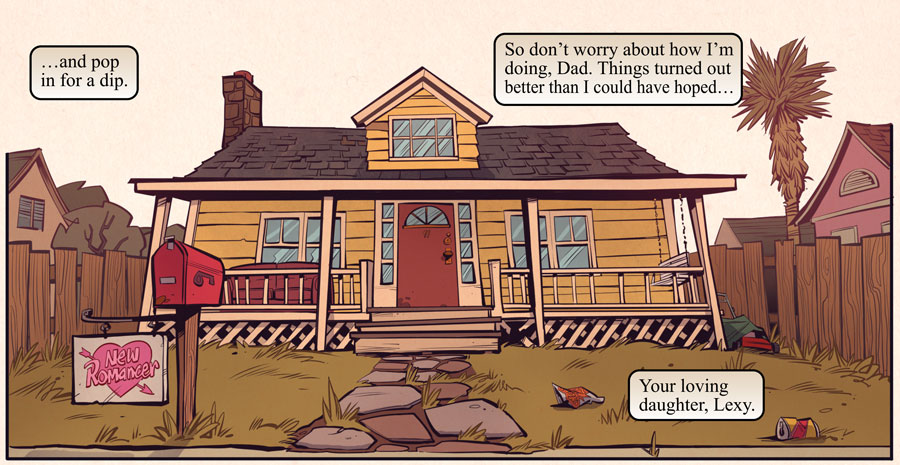
BRETT PARSON: I loved the idea that New Romancer was based out of this cheap falling-down house in a bad part of the suburbs. It’s like the New Romancer gang’s clubhouse, which slowly deteriorates as the series goes on. The mailbox is constantly being smashed in, the sign vandalized, and even though there’s a lawn mower under a tarp on the side of the house, none of them seem to ever mow the yard.
When I started working on this first issue, I had just bought my house, and had been doing demo and remodeling on it at night, so the exterior colors and house number 91 were a secret little nod to that.
PAGE 6:
MILLIGAN: Here, we get our first look at Lexy's father, the rugged but brainy Joe Ryan.
One of the themes running through NEW ROMANCER is the relationship between fathers and daughters—Joe Ryan and Lexy, Lord Byron and Ada Lovelace—and we begin to see that here.
We start to understand more about Lexy's unusual childhood and education, her obsession with Lord Byron and the romance algorithm she's developing. The fact that she's stolen some of this program from her previous employer, Incubator, will have a big impact on the story.
PARSON: Even though it’s just a few panels, this scene where we get a glimpse of Lexy’s childhood and her father’s bizarre experiments was my favorite part in this issue. Lexy’s father could have easily been drawn as a stereotypical mad scientist. Instead, I wanted him to look like he could be a truck driver or a plumber. A blue collar guy who lives in a rundown house and smokes and drinks too much, but happens to be a computer genius. I imagined he built all his machines that he uses on Lexy in the garage out of pieces of household appliances and junk from scrap yards…
PAGES 7-11:
MILLIGAN: We're introduced to the strange basement in Incubator known as the Wollstonecraft Center. The link to Mary (Shelley) Wollstonecraft and therefore Frankenstein's monster is of course deliberate.
Angel—the Incubator worker who replaced Lexy when she was kicked out, and who will become her main adversary—realizes that something other than Incubator's own A.I. program is animating the bodies.
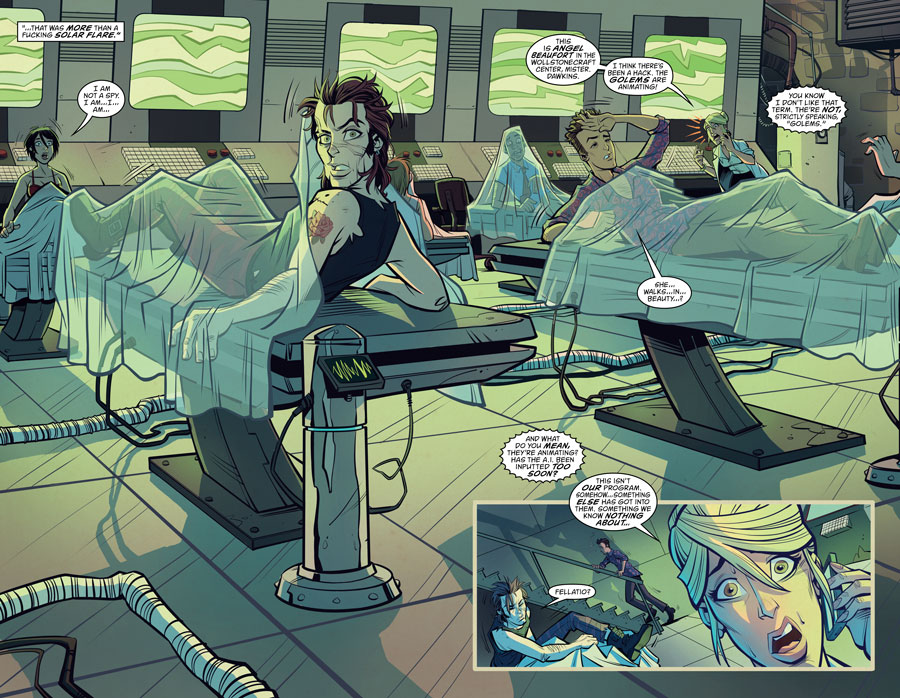
PARSON: I really wanted the Wollstonecraft Center to look like an evil lair from a James Bond movie, or Johnny Quest—mix that with Frankenstein’s Laboratory and you have the dark creepy basement of Incubator, Inc. Today’s world is full of sleek futuristic devices and machines, and I feel like people don’t pay much attention to these things. So I wanted all the machines and technology in the comic to be a bit clunky and old-school looking. The color scheme for the wall of computers in Incubator was actually based on the original Nintendo.
PAGES 12-15:
MILLIGAN: This was the scene I was most looking forward to writing. And it's probably the one I've enjoyed writing the most. The moment when Byron-obsessed, socially awkward, hopelessly romantic Lexy finally meets the man of her dreams and object of her infatuation...in the flesh.
Byron looks...Byronesque...but he is not a dead ringer for the original Byron. He's possessed a stranger's body and by dint of the weird magic of the algorithm that's brought his personality back to life has altered this body enough to make him look a bit like Lexy's poet lover hero. The jaunty quiff is pretty damn close. But it's the club foot, withered just like Byron's, that is the clincher for Lexy.
As well as Byron, this character is based on a modern poet. Indeed, the body into which Lord Byron's personality has entered is named Stephen Morrisey (no prizes for guessing who this character's influenced by, then), though the memories of this original persona are soon lost beneath the overwhelming Byronism of Lord Byron.
No sooner does Lexy convince herself that this is indeed somehow Byron than they start to argue. Lexy is a lover of Byron's poetry, she's a lover of the idea of Byron—but that doesn't mean to say that this fiercely intelligent young woman is not without her criticisms of the great man.
Much of this disapproval centers around Byron's treatment of Ada, his daughter. Lexy's closeness to her own father brings Byron's abandonment of Ada into sharper, more painful focus.
The last thing Lexy wants to do is argue, though. And the two seem to be getting closer—however, the course of this unusual love affair is not about to run smoothly...

PAGE 17:
MILLIGAN: In this short scene between Lexy and her coworker Starsky, Lexy utters the line that might encapsulate the entire series.
"I think I met the man of my dreams tonight. And you know what…? It really sucked."
PAGES 19-20:
MILLIGAN: Finally, after the weird science, the Byronic bon mots and romantic yearnings, the story lurches toward the darker and sicker.
Byron is not the only demon lover to crawl out of the history books and onto the pages of this story. Casanova sits smothered in the blood of his victims, checking out Byron's profile on a dating site.
Casanova knows what he wants. And he knows exactly how to get it.
PARSON: This was the scene that REALLY got me excited about the series. Byron is not the only lover to be brought back from the dead. Casanova is here, too, and he’s out of his mind! We see him earlier waking up in the Wollstonecraft center in the body of some punk rock musician kind of guy, and when we meet him in the end he’s become a murderous cross between Casanova and Adam Ant.
Casanova’s New Romantics are his gang of street punks and angry teens who are under his spell. As a kid I was always creeped out by the VHS cover art of Penelope Spheeris’ 1983 film Suburbia, which was a painting of these three pale characters with bright hair and weird face paint. The New Romantics’ look was somewhat inspired by that, as well as the “droogs” from A Clockwork Orange.
MILLIGAN: Thus ends the first episode, with the introduction of another great lover from the past, and the promise that there'll be more to come.
One character who maybe hasn't been mentioned enough is Ada Lovelace. This genius plays a big part in Lexy's life and will appear later in the series. Associate Editor Rowena Yow made more than valuable contributions with shrewd insights into Ada's character, which were a massive help.
Finally, the genesis of this comic was unlike most I'd worked on. It was editor Shelly Bond who got me thinking in this direction, and the idea for this story came about through a number of emails.
One final amusing snippet: Shelly tells me she reminded me of a pitch—or pre-pitch—I'd sent to DC some years ago, and this was our starting point for much of this story. That's true. Shelly, though, tells me that story was called BYRON’S NOT DEAD. I remember it as BYRON IS DEAD.
Either way, Byron's alive now. And Lexy Ryan is very glad about it.
NEW ROMANCER #2 is now available in print and as a digital download.
